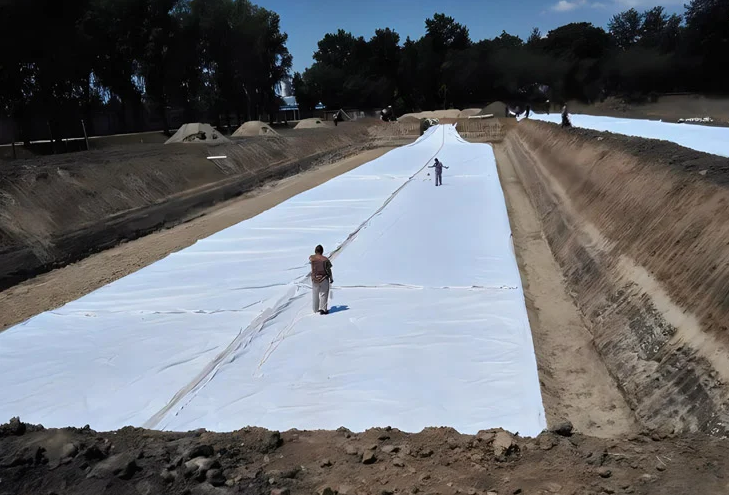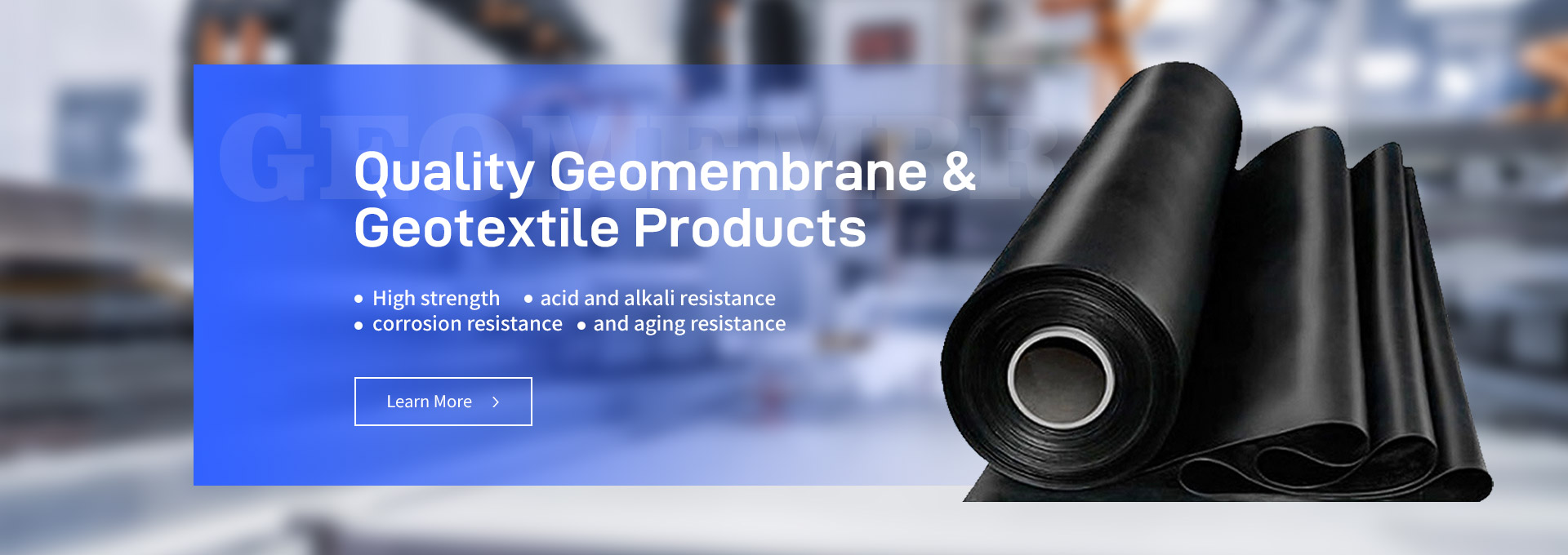In construction and environmental engineering, geotextiles are highly versatile materials that play a crucial role in many projects. They might look simple, but their applications range from drainage to reinforcement, filtration, and separation. If you're in civil engineering, agriculture, or environmental management—or just curious about this innovative material—this article will help you understand the key functions of geotextiles and how they can benefit your projects.

What Are Geotextiles?
Geotextiles are permeable fabrics made from polyester or polypropylene fibers, either woven or nonwoven. These materials belong to the broader category of geosynthetics and are prized for their lightweight, strength, and multifunctionality.
They are engineered to address various construction challenges. From stabilizing foundations to enhancing drainage and providing protection, geotextiles offer cost-effective solutions across a wide range of applications. If you're looking for the best geotextiles for sale, you'll want to consider options that meet your specific project needs.
Key Functions of Geotextiles
The main functions of geotextiles can be summarized into four categories: drainage, reinforcement, filtration, and separation. These functions often work together to deliver comprehensive solutions for engineering challenges.
1. Drainage Function
The drainage capability of geotextiles is one of their most essential features. Their permeability allows water to pass through while retaining soil and sediment, making them ideal for water management.
How It Works
The porous structure of geotextiles guides water into drainage systems while preventing soil particles from clogging pipes or channels. For instance, in highway construction, geotextiles are often used to create drainage layers, preventing water accumulation that can damage the road base.
Common Applications
Road Drainage: Quickly channels surface water away from road bases.
Underground Drainage Systems: Protects drainage pipes from sediment buildup.
Agricultural Drainage: Helps manage excess water in fields to protect crops.
Why Choose Geotextiles for Drainage?
Their high permeability and clog resistance make geotextiles a superior choice over traditional drainage materials. Plus, they’re lightweight and easy to install, reducing overall project costs.
2. Reinforcement Function
Geotextiles also provide excellent reinforcement by improving soil strength and stability. They help distribute loads evenly and prevent soil from shifting, making structures more durable.
How It Works
When placed in foundations or soil layers, geotextiles reinforce the ground by absorbing and distributing tensile stress. This prevents deformation and enhances stability, especially on slopes or weak soils.
Common Applications
Slope Stabilization: Prevents landslides and erosion.
Road Base Reinforcement: Strengthens the foundation of roads and highways.
Retaining Walls: Adds stability to prevent cracks or collapses.
Why Choose Geotextiles for Reinforcement?
Compared to traditional reinforcement methods, geotextiles are lightweight, cost-effective, and environmentally friendly. If you’re sourcing materials, partnering with a trusted geotextiles manufacturer ensures you get high-quality reinforcement fabrics tailored to your needs.
3. Filtration Function
The filtration function of geotextiles is vital in preventing soil erosion while maintaining water flow. This dual-purpose capability makes them indispensable in many projects.
How It Works
The fabric's fine pores allow water to pass through while blocking particles like silt or sand. This prevents clogging in drainage systems or erosion in soil beds.
Common Applications
Riverbank Protection: Prevents soil erosion while maintaining water flow.
Drainage Pipe Filtration: Stops sediments from entering and clogging pipes.
Agricultural Filters: Keeps soil in place while allowing proper irrigation.
Why Choose Geotextiles for Filtration?
Their efficient filtration capacity and durability make them ideal for long-term use. Opting for the best geotextiles for sale ensures you get fabrics that meet high performance and quality standards.
4. Separation Function
Geotextiles also act as separators, preventing the mixing of different soil layers. This is critical for maintaining the integrity of structures and preventing future failures.
How It Works
By creating a physical barrier, geotextiles separate fine soil from coarser materials. This preserves the structural integrity of roads, embankments, and other constructions.
Common Applications
Road Construction: Keeps gravel and soil layers distinct, reducing wear and tear.
Railway Tracks: Prevents mixing of ballast and soil layers for smoother operation.
Landscaping Projects: Separates soil types for better drainage and growth.
Why Choose Geotextiles for Separation?
They’re lightweight, easy to install, and long-lasting. Choosing the right geotextiles manufacturer ensures you get materials tailored for effective separation and optimal performance.
How to Choose the Right Geotextiles?
Selecting the right geotextiles depends on the specific needs of your project. Consider the following factors:
1.Purpose:
Identify the primary function you need from the geotextiles. For drainage projects, prioritize high permeability to efficiently channel water while preventing clogging. For reinforcement, choose materials with excellent tensile strength to stabilize soil.
2.Specifications:
Carefully assess the technical properties of the geotextiles, such as permeability, thickness, strength, and resistance to environmental factors like UV exposure or chemicals. For projects in harsh conditions, opt for geotextiles with enhanced durability. Make sure the fabric’s size and weight match the scale and load-bearing requirements of your project.
3.Supplier:
Partnering with a reliable geotextiles manufacturer is essential for obtaining high-quality materials. Look for suppliers who offer clear specifications, comply with international standards, and provide technical support. A reputable supplier ensures consistency in quality and can recommend the most suitable products for your project.
Conclusion
Geotextiles might seem simple, but their multifunctionality makes them an essential tool in modern engineering. From drainage and reinforcement to filtration and separation, they provide effective, economical, and environmentally friendly solutions.
Ready to explore how geotextiles can transform your projects? Contact us today to find the best geotextiles for sale and partner with a reliable geotextiles manufacturer for all your needs. Let’s work together to ensure your project’s success with the highest-quality materials!

